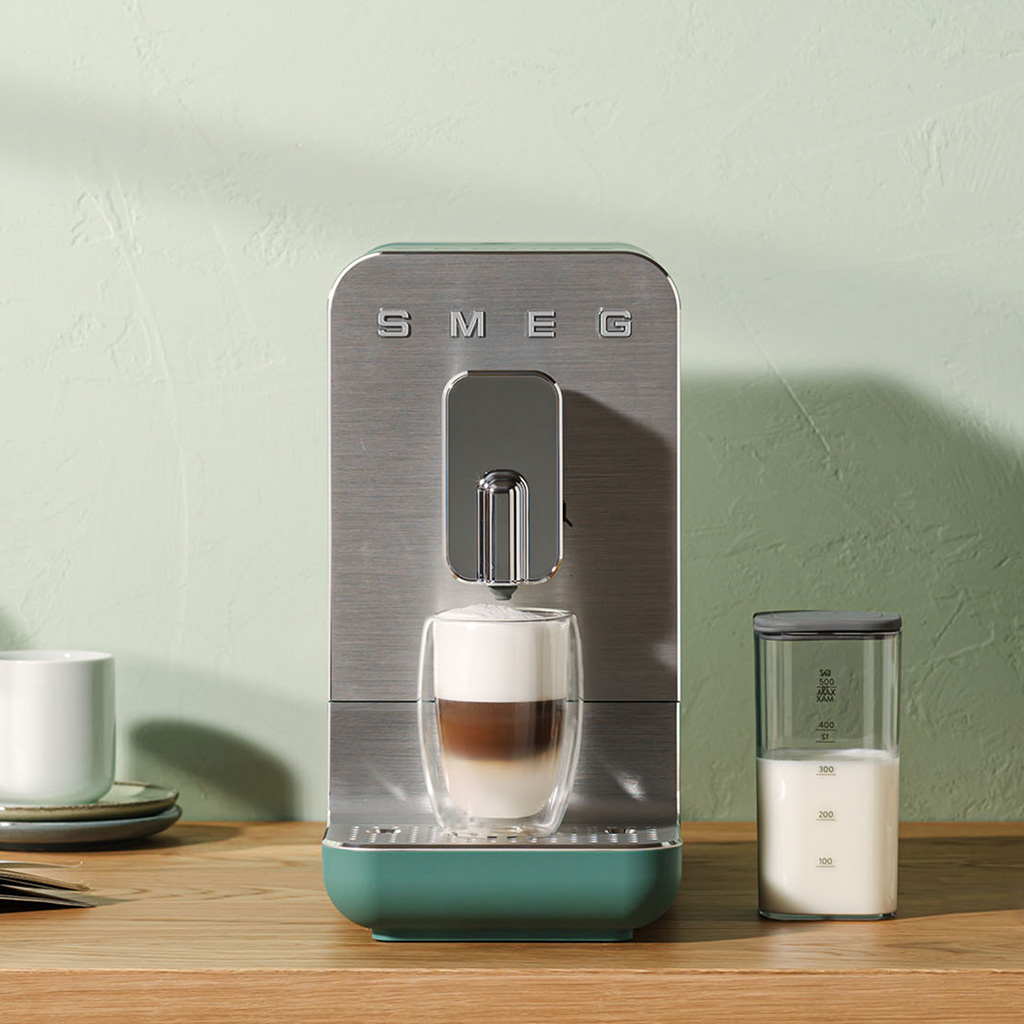
Smeg is known for its iconic retro style appliances, but the brand also makes some pretty stylish modern appliances too. And the Smeg Bean to Cup Coffee Machine with Automatic Milk Frother is one such appliance. That said, the best coffee machines aren’t born purely from good looks, what’s inside matters.
The previous version of this Smeg bean to cup coffee machine was equipped with a steam wand so you had to steam and texture the milk yourself. This newer iteration has an automatic milk frother and an expanded selection of drinks to choose from. I’m testing it to find out if these upgrades will propel it into our list of the best bean-to-cup coffee machines.
Having started my coffee journey later in life, I’ve surprised even myself with how quickly I’ve developed a taste for very good quality coffee. I won’t accept any old caffeine hit. So when I got the chance to try out this upgraded Smeg bean-to-cup machine, I wanted excellent coffee, especially given the price tag.
Smeg Bean to Cup Coffee Machine with Automatic Milk Frother specs
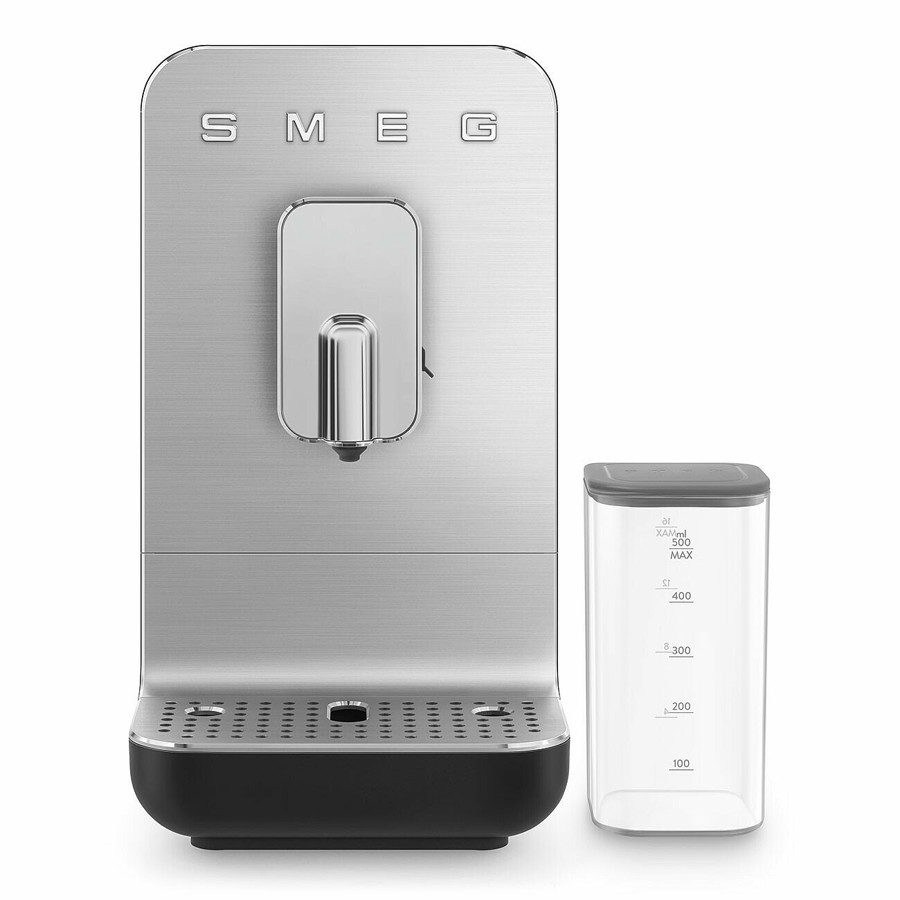
- Type: bean-to-cup
- Water tank capacity: 1.4 litres
- Bean hopper: 250g
- Pressure: 19 bar
- Dimensions: H36.1cm x W24.5cm x D44cm
- Colours available: black, white, emerald green
- RRP: £799.95
Unboxing and first impressions
Aside from a couple of plastic bags, this Smeg coffee machine comes in easily recyclable cardboard packaging. And once out of the box, my first impression was that it has a beautifully neat and streamlined shape. For a bean-to-cup coffee machine its footprint isn’t too big, and its minimal modern appearance means it looks subtle, yet effortlessly cool on my worktop.
There’s no assembly to do, there are just a few accessories to unbox. These include the milk container that comes with a lid, and the milk tube, which comes with its own lidded container. There’s also a second container that’s specifically for cleaning the milk tube and you get a water hardness test strip, cleaning brush and cleaning needle.
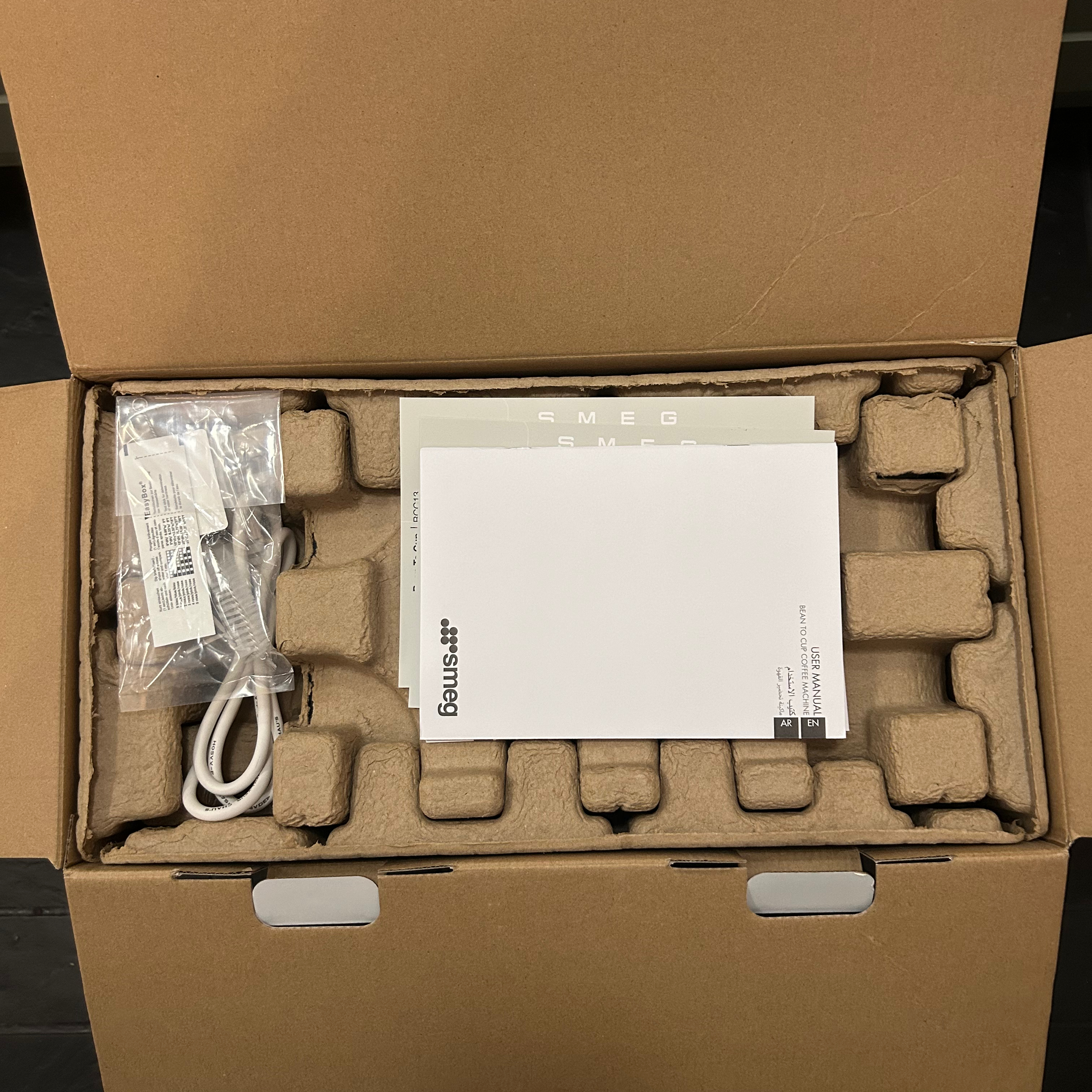
The first thing the manual instructs you to do is to remove several of the parts and give them a good rinse. After everything has been dried and replaced, you can start filling it up with water and beans. In line with the neat and streamlined design, both the water container and coffee bean container are hidden under removable covers on the top of the machine.
There’s space for a standard 250g bag of coffee beans. And inside the coffee bean container you’ll also find a dial for adjusting the grind size. Unlike some other bean-to-cup coffee machines, it doesn’t have a slot for adding ground coffee. Which means you don’t have the option to use it for the occasional decaf drink.
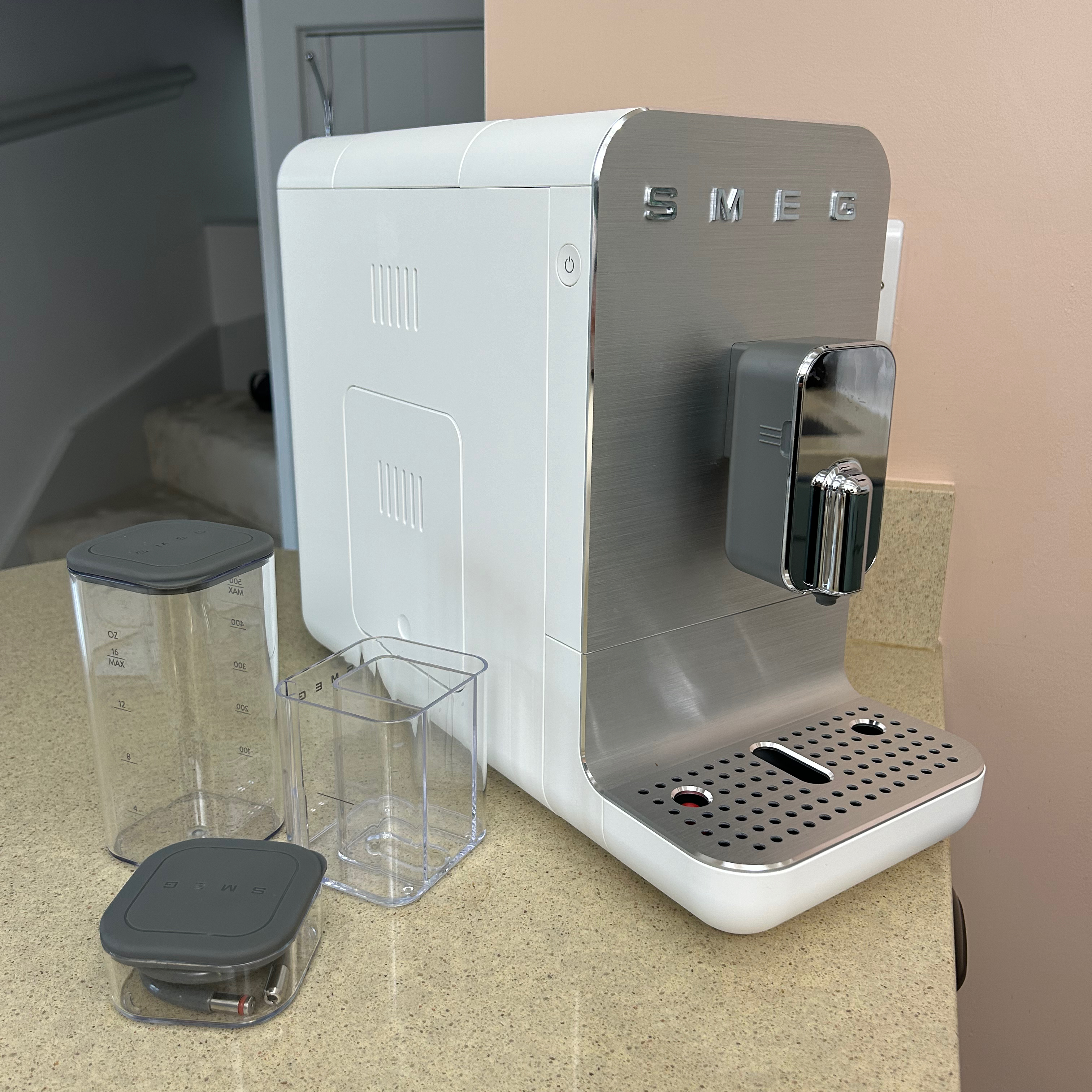
At first glance it looks like there are five drink options on the control panel. However, there are actually ten. There’s a white menu and an orange menu, signalled by the colour of the LED’s surrounding each button. You toggle between the two menus simply by pressing the button below them.
The drinks on the white menu are; espresso, coffee, hot water, cappuccino, and latte macchiato. Meanwhile the orange menu offers up espresso light, long espresso coffee, american, espresso macchiato, and milk foam. Since one drink option is simply hot water and another is just milk foam, I’d argue there are really only eight proper drinks on the menu.
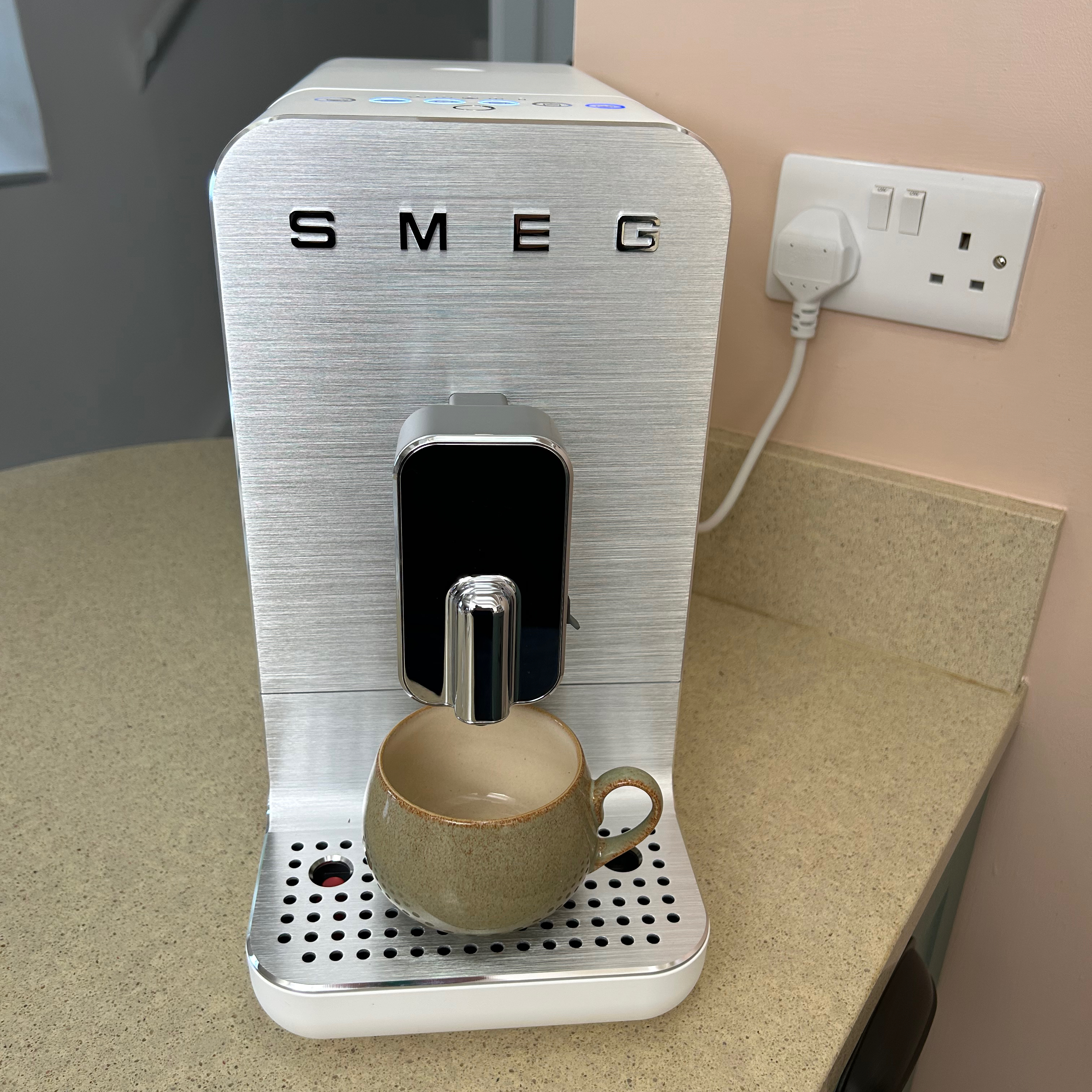
The drink volumes can be easily adjusted to suit the size of your cups. However, what I would say is that most of these drinks are designed to be shorter, stronger coffees, so if your usual order is an extra large, this coffee machine is unlikely to suit you.
The sixth button that sits to the right of the drink options is the easy cleaning button. This initiates a rinse through of the milk circuit. However it must be used in conjunction with the supplied container that you have to pre-fill with water, so it’s not quite as automated as I’ve seen on some other bean-to-cup machines.
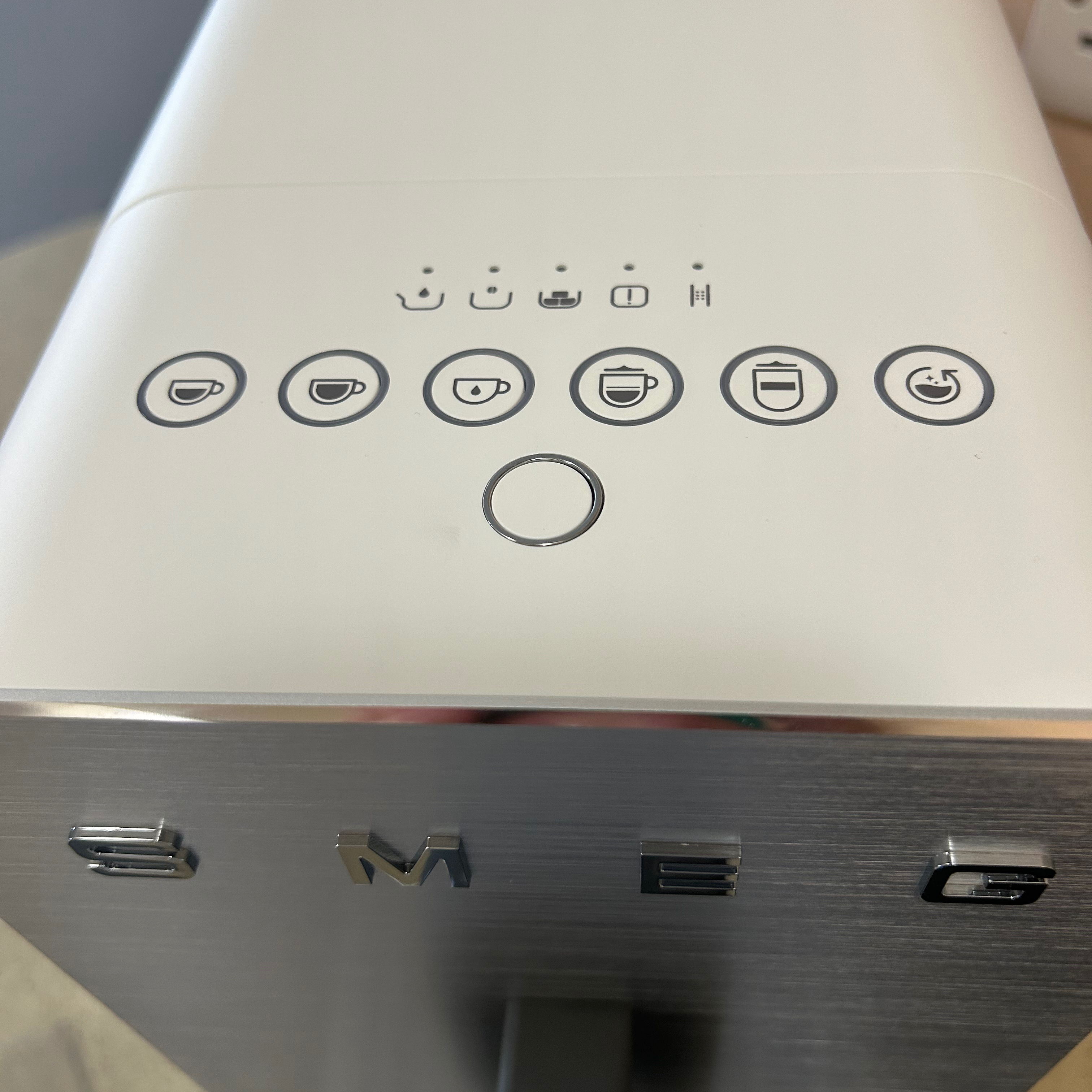
Above the main drink selection buttons there’s a series of five alarm lights that alert you to any issues. These include an empty water tank, no coffee, coffee grounds container full, brewing group alarm, descaling alarm.
The drink dispenser slides up and down to allow room for different height cups. At its lowest there’s space for an 8cm cup, and if you slide it all the way up, you can fit one that’s about 12.5cm tall. Annoyingly this wasn’t enough space to accommodate my husband’s usual travel cup that he fills daily for the commute to work.
What is it like to use?
When you first switch it on, the initial heat up and rinse takes up to 55 seconds. During my first few days of using the coffee machine I had to keep referring to the manual when selecting drinks. I didn’t find the images displayed on each of the drink selection buttons helped me to intuitively know what the corresponding drink would be, especially since each button represents two drink options depending on whether you’re on the white or orange menu.
Towards the end of the week, I instinctively knew which button to press for my preferred coffee, but still had to double check the manual if a friend came round and I wanted to offer them a different option.
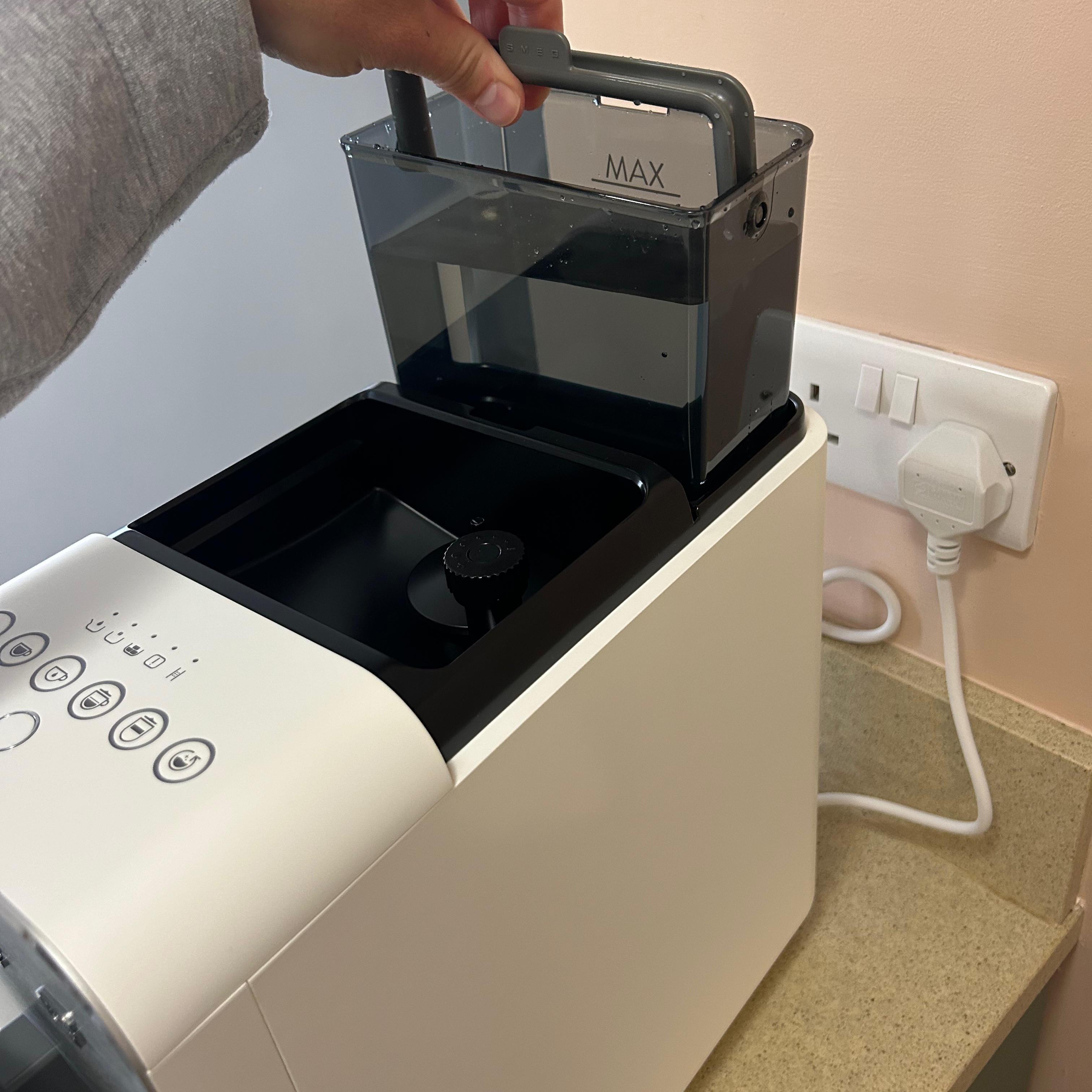
An espresso takes around 40 seconds to pour and the first one I poured lacked the thick, rich crema that I was looking for, which meant I had to adjust the grind size. You do this via the dial inside the bean hopper.
To avoid any damage to the grinder, adjustments have to be made while grinding is in progress. I moved it from the middle grind size to a much smaller size. However, it seems I overshot somewhat because after this the espresso began dripping out too slowly. So in the end I split the difference and this did the trick.

Once I’d got the grind size about right, the espresso came out with a much thicker and more robust crema. It had a smooth and fruity flavour, although it did have more of a bitter backnote than I’d like. I don’t think the overall flavour is as balanced as from my usual manual espresso machine. So you may have to trial a variety of bean types to get the best, most well-rounded espresso shot from this machine .
For milky drinks you have to fill the milk container, plug one end of the milk tube into the dispenser, then immerse the other end into the milk. There’s no guidance regarding how much milk you’ll need for each drink, so I tended to fill up the container with more than I thought I needed, then afterwards you can just pop the lid on it and put the whole container into the fridge for next time.
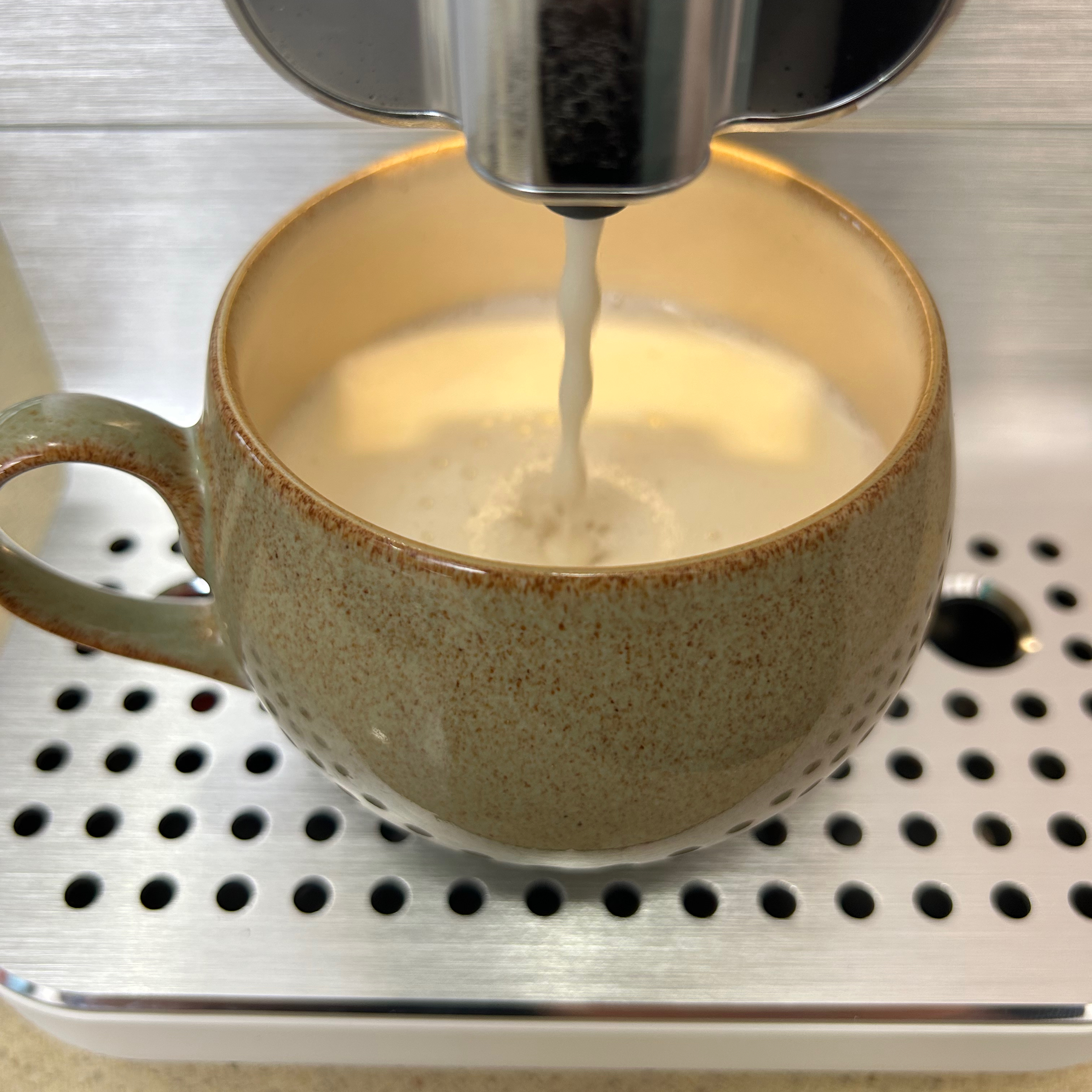
My first milky drink was a cappuccino. It took a little over a minute and a half to pour. The finished drink was only around 55C so you have to drink it immediately. The flavour was a bit weak for me, but also with a bitter backnote that I wouldn’t usually expect from the beans I was using.
My usual daily wake-up brew is an oat milk flat white, and aside from having extra foam, a cappuccino is probably the closest I can get to that with this machine. However I did try customising the milk and espresso quantities to try and get a better approximation of my favourite drink, and I do appreciate being able to make these adjustments. What’s more, it’s actually pretty straightforward to do.
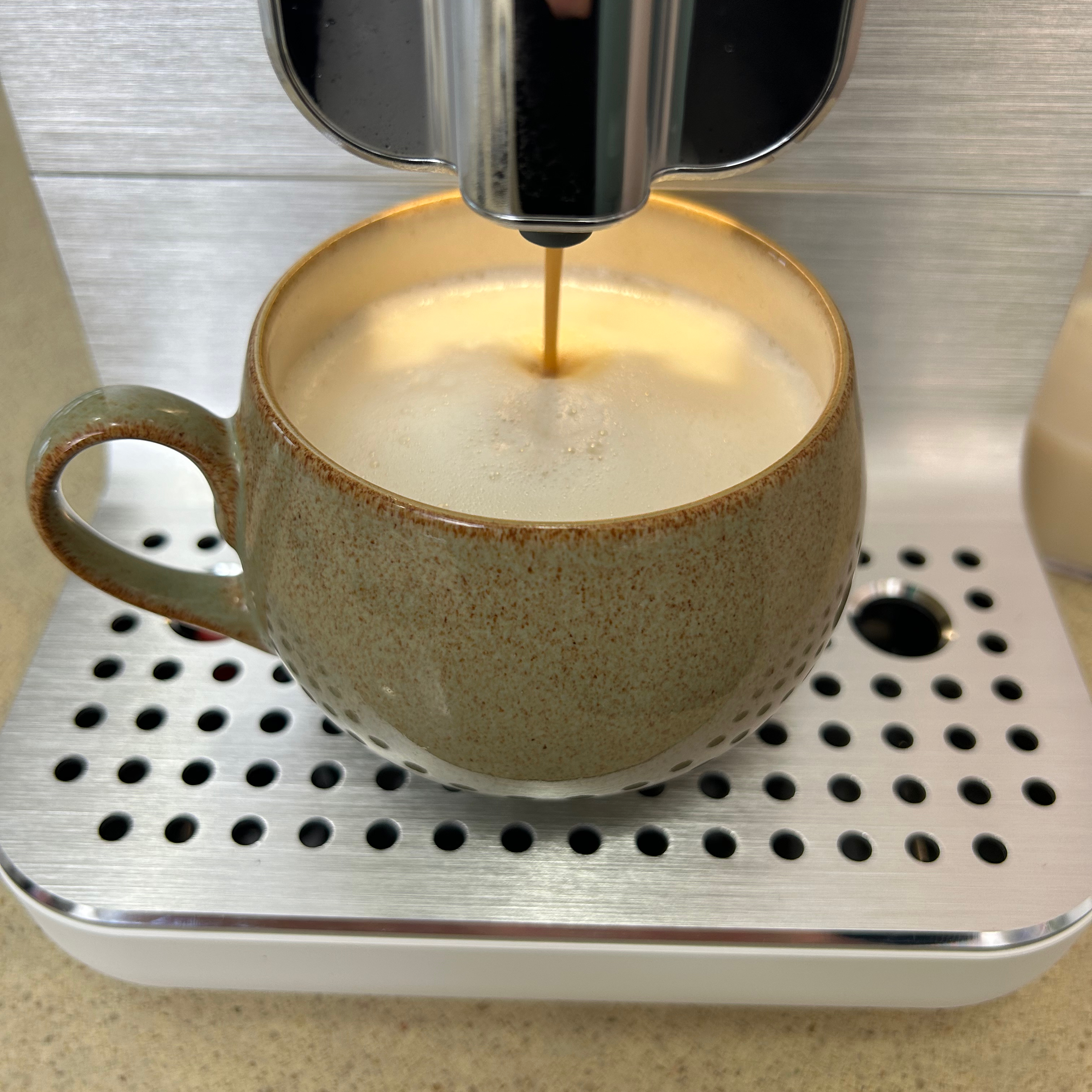
The latte macchiato is a very slightly bigger drink than the cappuccino. The milk foam level is similar, it’s just a sweeter, milkier drink thanks to the extra milk that’s dispensed. The preset quantity dispenses in around 1 minute 40 seconds.
The only other milky drink on the menu is an espresso macchiato which is essentially an espresso with a tiny shot of milk foam, it pours in around 70 seconds. It took me a while to notice that all three milk based drinks are foamy ones. And if you only want hot milk dispensed, you get a foamy milk. So if you’re not a fan of milk foam, or if you want to be able to vary the milk texture, this machine won’t suit you.
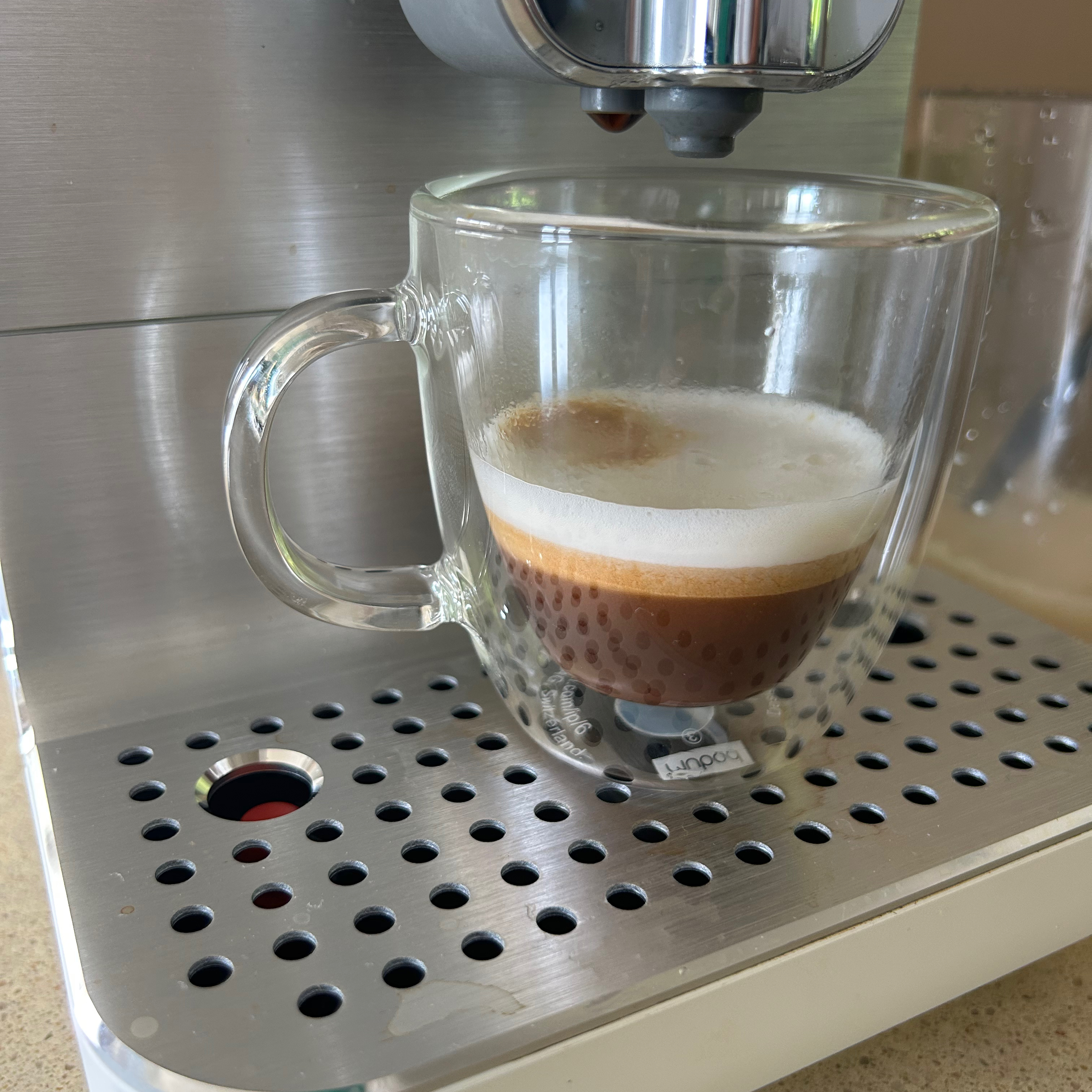
Initially I assumed the long espresso would simply be a double espresso. However, a double espresso is usually around 60g and this drink weighed 150g, so it’s much bigger than a double espresso. It’s also much weaker as all the water was passed through one coffee puck - no extra coffee was ground during the process.
In contrast, the espresso light weighed 45g so instead of being smaller than a standard espresso it was marginally longer and poured in 45 seconds. The flavour of the espresso light is slightly weaker than the standard espresso, which makes sense because it has a bit of extra water in it.
There are two longer coffee drinks on the menu, these are American and Coffee. The American is an espresso with some hot water added, but it’s still a small 125g drink if you leave it on the default volume. And if you increase the volume it’ll just get weaker, so I tended to hit the button a second time if I wanted a full mug.
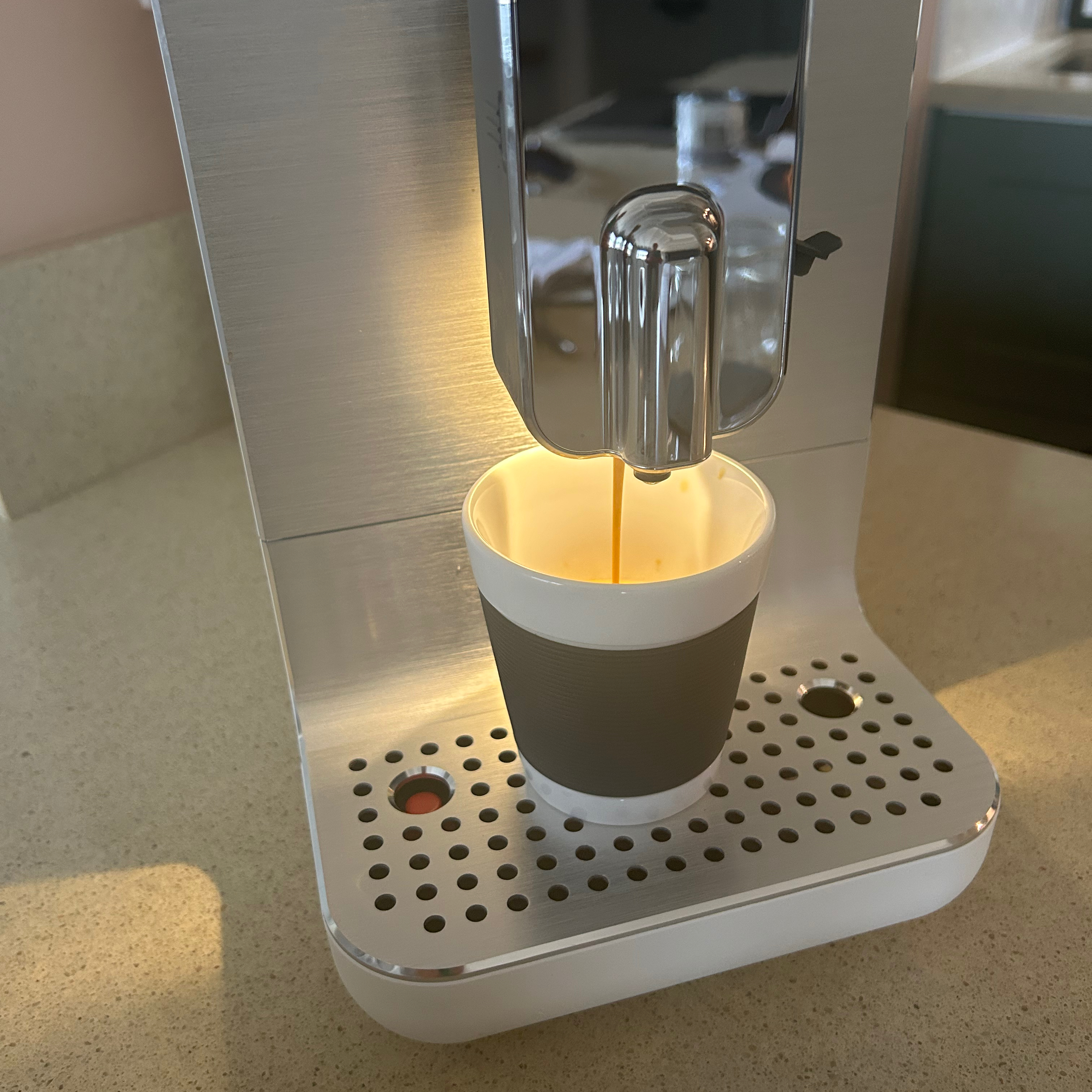
The drink that’s ambiguously called ’coffee’ weighed around 90g and is simply a smaller version of the long espresso. I have to say that apart from the standard espresso, I found the other black coffee options a bit confusing. Essentially with this machine, what I’m discovering is that it offers five variations on a black coffee or espresso and you’ll have to spend time playing around with them to discover which most suits your taste. And there are three milk based drinks that are foamy, shorter drinks.
All the black coffees poured at around 75C, whereas the milky drinks were much cooler at 50-55C. There’s no option to adjust coffee temperature. The only thing you can do to help increase the temperature is to pre-warm your cups by using the hot water function to fill them with hot water.
The hot water dispenses at 70-75C, so it’ll warm the cups nicely. It’ll be fine for making a cup of green tea, but that temperature isn’t hot enough for a decent builder's brew.
What's it like to clean?
After each milky drink, you have to rinse through the milk system. This can either be a laborious process of dismantling various parts and rinsing them by hand, or you can use the easy clean function. This automatically rinses everything, but unlike most other bean-to-cup machines I’ve tried, it doesn’t use water from the water tank to do this. Instead you have to fill the supplied container and submerge the milk tube in it.
Despite being the most convenient way of cleaning the milk system, at first I did still find this to be a bit of a faff. However, it quickly became part of my routine and I didn’t mind it.
The rest of the cleaning includes regular emptying of the grounds container, drip tray as well as cleaning the brew group and water container. And of course, you’ll need to descale it when prompted. This isn’t too tricky as long as you follow the instructions, that said, most of the process is automatic, so you don’t have to do too much.
How does it compare to other coffee machines?
I’d urge you to look at the DeLonghi Rivelia which has a similar footprint and a comparable price tag. With its colour touch screen menu, the DeLonghi is far more intuitive to use and offers 16 drinks to choose from, as well as a wealth of easily adjustable settings. However, while it looks great and makes fabulous coffee, it’s not quite as streamlined as the Smeg.
Alternatively, why not keep it stylish with the best looking pod coffee machine money can buy. The Sage Nespresso Creatista is effortlessly cool, whilst also requiring minimal coffee know-how, since it uses Nespresso pods. It’s a cheaper option, but the cost of the Nespresso pods can stack up. And no pod coffee can match up to flavour from freshly ground coffee beans.
Should you buy the Smeg Bean to Cup Coffee Machine with Automatic Milk Frother?
I can’t fault this coffee machine when it comes to looks. Its beautiful streamlined design is a big contrast to the many bulky, somewhat ugly competitor models around. However much I love the look though, I can’t get past the very limited menu of drinks.
Maybe I’ve been spoilt by some of the best bean-to-cup coffee machines that have incredibly user-friendly colour touch screen controls with a vast menu of drinks. But I found the drink selection buttons weren’t intuitive and for a coffee machine at this price point, I’d like more adjustable settings to enable me to really fine tune the drinks dispensed.
In short, if you love the look and you like short black coffee, or the occasional short foamy milk based coffee, then go for it. But if a large milky latte or a tall americano is your drink of choice and you then this machine will fall short.
About this review, and the reviewer
After completing a Home Economics degree, Helen went on to work for the Good Housekeeping Institute and has been reviewing home appliances ever since. She lives in a small village in Buckinghamshire in the UK, where she reviews all sorts of kitchen and home appliances using her wealth of experience.
As a daily coffee drinker who starts every day with two flat whites, Helen was more than happy to pack away her usual manual espresso machine and get her morning caffeine hit from this Smeg coffee machine instead. She had the machine on loan from Smeg and used it for a week, trying virtually all the coffees on the menu.







